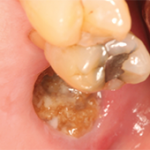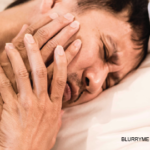References
- Khosla S, Burr D, Cauley J, et al. Bisphosphonate-associated osteonecrosis of the jaw: Report of a task force of the American Society for Bone and Mineral Research. J Bone Miner Res. 2007; 22:1479-1491.
- American Association of Oral and Maxillofacial Surgeons position paper on bisphosphonate-related osteonecrosis of the jaws. J Oral Maxillofac Surg. 2007;65:369-376.
- Hoff AO, Toth BB, Altundag K, et al. The frequency and risk factors associated with osteonecrosis of the jaw in cancer patients treated with intravenous bisphosphonates. J Bone Miner Res. 2008; 23:826-836.
- Bilezikian JP. Osteonecrosis of the jaw—Do bisphosphonates pose a risk? N Engl J Med. 2006;355:2278-2281.
- Mavrokokki T, Cheng A, Stein B, Goss A. Nature and frequency of bisphosphonate-associated osteonecrosis of the jaws in Australia. J Oral Maxillofac Surg. 2007;65:415-423.
DXA
Increasing Bone Densitometry Testing Through an Outreach System
By Gail C. Davis, RN, EdD
Denberg TD, Myers, BA, Lin, CT, Libby, AM, Min SJ, McDermott MT, Steiner JF. An outreach intervention increases bone densitometry testing in older women. JAGS. 2009; 57:341-347.
Abstract
Objectives: To evaluate the performance of a patient recall intervention that relies on an outreach coordinator with a bachelor’s degree to prompt women by mail and telephone about their eligibility for bone densitometry (dual-energy X-ray absorptiometry [DXA]) screening and allow them to schedule an examination without a medical provider visit ahead of time.
Design: Observational.
Setting: Academic general internal medicine practice.
Intervention: Mail- and telephone-based patient recall for DXA.
Participants: Five hundred sixty-four women aged 65 to 79 at average risk for osteoporosis without a history of DXA.
Measurements: Rates of DXA completion and the change in proportion of screened women during a seven-month intervention period, case finding for clinically significant bone loss, frequency of appropriate clinical follow-up, DXA no-show rates compared with usual care, and clinician satisfaction.
Results: Through patient recall, rates of DXA screening rose significantly (P<.001), and the proportion of the eligible clinic population screened increased 13%. Thirty percent of patients had clinically significant bone loss, with almost all of these receiving follow-up, DXA no-show rates were comparable with usual care, and provider acceptance was high.
Conclusion: A patient recall intervention substantially increased DXA screening, allowing pharmacological therapy to be started much earlier in some women with significant bone loss. It imposed minimal burden on providers and enhanced patient convenience. This type of program may have utility for additional preventive services.

